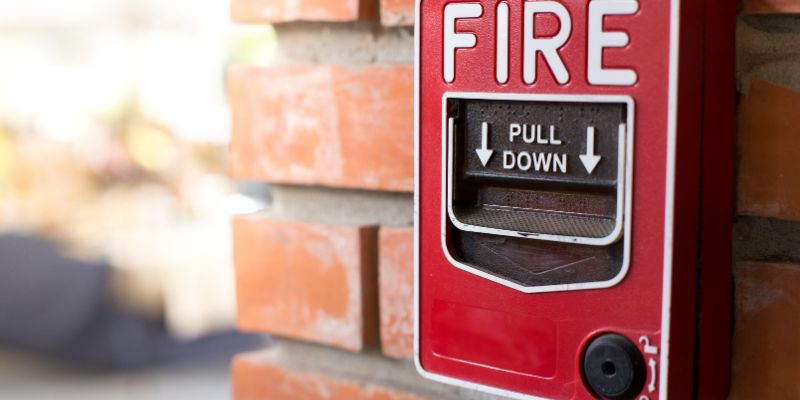Get A Quote

What are Emergency Control Functions?
Emergency control functions allow a fire alarm system to communicate with your commercial building’s system to assist in the evacuation process of building occupants. The emergency control functions communicate signals to the Fire Alarm Control Panel (FACP) if certain areas of the building need to be restricted or shut down to prevent a fire or smoke from spreading.
The fire alarm control panel works by integrating numerous valves, sensors, and devices that detect smoke, temperature, pressure, and humidity and work cohesively to ensure the safety of building occupants.
Emergency Control Functions Components
Relay
An NAC, or notification appliance circuit, is a control circuit used to send voltage directly to the relay and not the notification appliances. The fire alarm control unit can operate emergency control functions thanks to a relay, which is an electromechanical switch that may be opened and closed. The switch that regulates power entering the common terminal (C) will change from the usually closed (NC) position to the ordinarily open (NO) position when power from the fire alarm control panel activates an electromagnet coil. Afterward, other systems can be managed by this switch.
Elevator Recall/Shutdown
Commercial building elevators are commonly vulnerable during a fire emergency. This is due to the shaft extending from the building’s top floor to the lowest level, providing a simple channel for smoke and fire to spread from its origin.
When the threat of fire is detected, a fire alarm control system may send instructions to the building’s elevators to recall or shut down. Elevators receive the information required to protect passengers thanks to the seamless interaction between the fire control system and elevators. Heat and smoke will be kept inside the shaft with the aid of a properly designed and installed system. The threat’s location is communicated in the data given to the elevator control system, which is then utilized to decide which levels should be avoided or where it is best to release occupants so they can leave the building safely and efficiently.
Smoke Control
The smoke control system is a key component for commercial buildings with bigger common areas larger than one floor due to fewer physical barriers. Furthermore, smoke control systems assist in maintaining fire control. These systems draw heat and smoke from the fire away from the origin point, allowing the fire to be extinguished more efficiently.
Fire Doors
The fire doors of a commercial building are crucial to a fire safety plan because the goal is to keep the fire as isolated and small as possible. Fire doors provide a physical barrier that assists in the containment of fire and smoke. Fire doors are designed to keep smoke and fire from spreading from one location of a building to other areas, which also delivers a safe exit for building occupants. Inspecting fire doors to ensure they are up to code and working properly greatly saves lives.
Closed fire doors serve as a deterrence for fire. They must be used to secure openings within fire-resistant buildings. These doors have automatic closers because they must be closed to function. In some circumstances, an electro-magnet door holding that is attached to the fire alarm can be utilized to hold these doors open. The electricity to the electro-magnets will be switched off when the fire alarm control unit sends a signal, allowing the door to close.
Containment
Containment of fire serves as a critical component of any commercial building fire safety plan. Isolating the threat and halting the spread of the fire are two of the main goals of a fire control system. Newer construction commercial properties have elevator shafts and stairwells with built-in fire-resistant barriers. When fire doors have automatic closers, a fire in an elevator shaft or staircase can be contained there, where it can be put out by the building’s sprinkler system or when the fire department arrives.
High Rise Security Systems, HRSS, with SMG Security Holdings, SMG understands the importance of equipping your commercial building with a well-designed, well-executed commercial fire safety system.
We provide decades of experience and have installation flexibility that allows each component of your commercial fire alarm system to be customized to meet the unique needs of your business.
HRSS/SMG is a leader in commercial fire and life safety systems proudly serving the Chicagoland area. We deliver complete and comprehensive services using UL-listed fire safety equipment for seamless integration. Contact us to learn more about how we can customize emergency control functions on your fire alarm system for the best protection of your commercial property.



